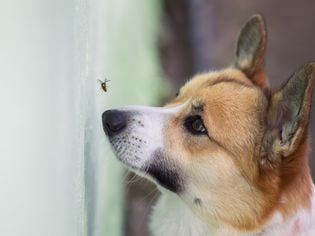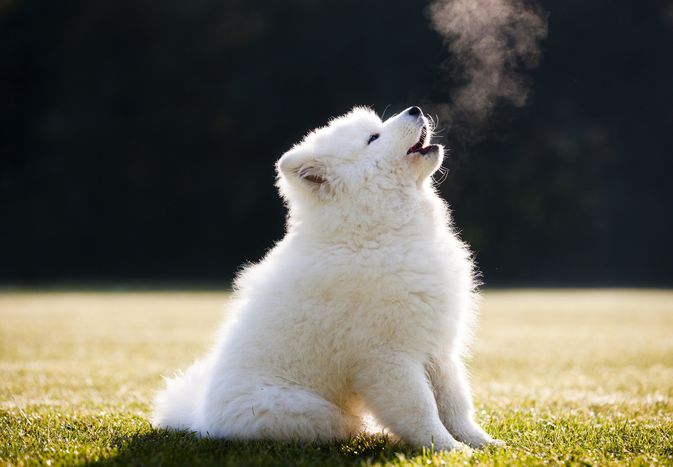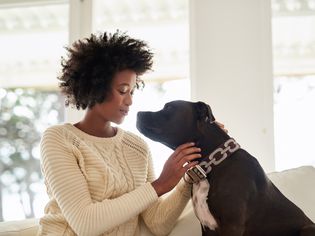Most of us have heard of seasonal affective disorder, a condition sometimes called the "winter blues." But can this condition affect dogs, cats, and other pets? You may have noticed your pet acting differently during winter months. Some pets do experience seasonal depression, but the exact reason why isn't always clear.
Can Pets Get Seasonal Affective Disorder?
The answer is not quite straightforward because it can be difficult to assess in animals. In humans, seasonal affective disorder is a type of depression associated with shorter days and low exposure to sunlight in the winter months. Symptoms of SAD may include depression, anxiety, fatigue, sleep issues (typically oversleeping), and cravings for comfort foods or carbohydrates.
You may notice behavioral changes in your pet in the fall and winter that suggest SAD, but there's no scientific evidence that this is a true condition in pets. However, that doesn't mean our pets can't suffer from some form of seasonal depression. After all, we know that both cats and dogs can experience depression. We also know that the seasons have physiological effects on animals, including changes to hair, sleep, and appetite. These changes could, in theory, lead to depression in some pets.
If you have SAD and notice that your pet seems depressed at the same time, it could be that your pet is simply reacting to you. There's plenty of evidence that dogs can recognize our emotions and, despite stereotypes, it turns out cats can perceive our emotions as well. So it's entirely possible that your pet is taking cues from you and, in a way, "catching" your emotions.
Signs of Seasonal Depression in Pets
Does your pet have the winter blues? While we can't ask our pets how they feel, we can look at their behavior and draw conclusions. Look for the following signs:
- Lethargy or fatigue
- Excessive sleep
- Appetite changes (typically increased appetite, but depressed animals may eat less)
- Decreased interest in exercise, toys, and games
- Hiding or withdrawing from family
- Clinginess/neediness
Of course, these signs may be related to an underlying illness, so contact your veterinarian if you notice these or any other unusual behavior. If it's not a physical condition, your vet can offer advice on helping your pet. In some cases, pets may benefit from medications or supplements.
How to Help Your Pet With Seasonal Depression
Fortunately, there are some things you can do at home to help your pet survive the winter blues. You may even find that helping your pet will benefit your own mental health.
For SAD in humans, mental health professionals typically recommend light therapy, talk therapy, outdoor exposure, antidepressants, and vitamin D supplements. However, not all of these treatments can be applied to pets. First, vitamin D supplements can be toxic to cats and dogs and should never be used without veterinary supervision. And talk therapy ... well, if only our pets could talk! In serious cases, your vet may recommend antidepressants for your pet, but there are simpler things you can try to begin.
Light and Outdoor Exposure
You don't need a special lamp—just try to let in as much natural light as possible to your home. Open the curtains and blinds early in the morning. Take your dog for several short walks (weather permitting) throughout the daylight hours. Let your cat enjoy time on a window perch, screened-in porch, or outdoors (supervised, of course).
Environmental Enrichment
There are several ways to make your pet's world more fun and interesting, all of which can improve your pet's well-being all year long. The goal is to create an environment that allows your pet to engage in instinctive behaviors.
You can enrich your cat's world by enabling them to practice their hunting skills and explore vertical space. Try installing cat shelves and walkways up high if possible. There are also many interactive cat toys, food puzzles, and other cat toys that will make kitty feel like a true hunter.
There are similar ways to enrich your dog's environment, especially with food puzzles and dog toys. Just a simple food-filled Kong can offer stimulating entertainment. During walks, be sure to give your pup plenty of time to sniff and explore.
Bonding
Of course, it's also important to spend plenty of time bonding with your pet, and you'll both benefit from the positive vibes.
Most dogs love spending time with their humans and show their love in several ways. Build a solid relationship from the start to establish trust and understand your dog's individual ways of communicating.
There are plenty of ways to show your cat how much you love them, from touch to training. And there are many ways your cat shows you they love you back.








